-
Does the Sanden Eco® heat pump hot water system require the assistance of an electric booster element to heat water, when outside ambient temperatures are very low?
No, unlike other competitor heat pump hot water (HPHW) systems, the Sanden Eco® HPHW system does not require an electric booster element
-
Should I get the official Sanden Quick Connection kit 15mm or 20mm?
The Sanden Quick Connection Kit includes the tempering valve, ECV (Expansion Cold Water Valve), elbows, insulation gloves for all the elbows and valves so you have the most efficient set up - you can't buy the insulation gloves separately. Makes the plumbing install much quicker (plumber only needs to source copper + lagging for the copper). Always highly recommended to ensure the Sanden is installed to specifications
Normally a house with upto 2 bedrooms is 15mm and 3+ is 20mm.
-
What are RECs and STCs, what are they worth? And how many do you get with your Sanden?
What are STCs and how many do you get with your Sanden?
The purchase and installation of a Sanden Eco® Plus Hot Water Heat Pump entitles you to Small-scale Technology Certificates (STCs) – formerly known as Renewable Energy Certificates (RECs). For more information: visit www.environment.gov.au/climate-change and www.cleanenergyregulator.gov.au
The Sanden HWHP achieves the highest level of STCs of any hot water heat pump, currently available in Australia, and these are as below:
To find out which zone your postcode is in click here (note this may change so if in doubt contact the clean energy regulator for more information)
The Table below shows how many STCs are available for each Sanden model in each STC Zone
How much are STCs worth?
STCs can be priced through the Government's STC clearing house or on the open market at places like Green Energy Markets.
So say you bought a Sanden GAUS-250FQS and you lived in zone 4 and the current STC price was $35
The total discount you would receive would be: 34 STCs x $35 = $1,190.
So you would receive a discount of $1,190 off the total price of your Sanden unit (note this is an example only to illustrate how STCs are calculated the actual discount will vary depending on the current STC price).
-
Sanden Wi-Fi Controller Reset
You have a Sanden Wi-Fi controller with model Wi-Fi-HPD for your Sanden Eco Heat Pump Model GAU-A45HPD and you're finding you can't add the Wi-Fi controller when tapping "Add Device"? Read on below.
Some symptoms reported by clients are:
- Wi-Fi Controller shows connectivity, but cannot change settings
- Heat Pump Status remains on Standby
- Wi-Fi status lights are correct but cannot find the Wi-Fi controller when tapping “Add Device”.
Actions:
- Check that Communication setting mode, C_SE is set to onHP on internal, Smart Controller
- Remove front cover of Wi-Fi controller, using a Phillips head screwdriver.
NB: Do not use a screw gun / drill as you will overtighten the screws when re-installing
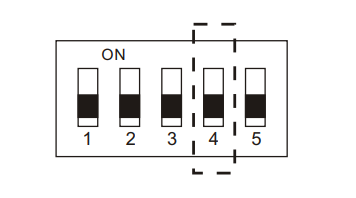
- Identify “SW1” and flick the 4th switch position to the opposite side. (You do not need to flick it back).
- LED display will be Red/Blue/Red
- Open the Smart Life App and tap “+” top right corner,then tap “Add Device”:
- App will search for devices, displays the Heat Pump under the “Discovering devices” heading. Tap “Add”.
- Enter Wi-Fi Uername and Password, then tap “Next”
- App will confirm device being added, then tap “Done”.
- LED display will be Red/Blue/Green
You can also check out our page PDF page here which includes screenshots -> https://pure-electric.com.au/resources/sanden-wi-fi-controller-reset-wi-fi
-
What are the benefits of the Sanden Eco® Plus heat pump hot water system?
Benefits include:
You can save up to 80% of your hot water energy costs when compared with a traditional electric hot water system! The Sanden Eco® Plus Hot Water Heat Pump uses only 20% of the energy required by older-style, electric element hot water storage systems.
Not only does a Sanden Eco® Plus heat pump hot water system help save on energy costs, it also delivers:
(a) Heat Pump Unit Benefits:
- Innovative technology; up to 50% faster heat recovery than currently available Hot Water Heat Pumps.
- Industry leading quality & performance; the Sanden Eco Plus gives you the highest level of STC credits of any currently available heat pump hot water system.
- Class leading warranties; backed by Sanden’s 35 years of operation in Australia.
(b) Stainless Steel Storage Tank Benefits:
- High quality; extra long life duplex stainless steel cylinder.
- Fully insulated; for extremely low heat loss.
- Safety, pressure and temperature relief valves.
- Mains pressure rated.
- Innovative technology; up to 50% faster heat recovery than currently available Hot Water Heat Pumps.
-
Is water quality an important consideration for the Sanden Eco® Plus heat pump hot water system?
Yes, importantly no warranty applies to the heat pump unit and the storage tank, where the chloride level exceeds 200 mg/litre and the pH is less than 6.0. If in doubt, seek water quality information from your local council or water supplier.
-
How does a heat pump hot water (HPHW) system work?
The Sanden Eco® Plus heat pump hot water (HPHW) system operates like a refrigerator in reverse. It contains a fan that forces air through an evaporator that contains a refrigerant. The heat in the ambient air passes through the evaporator (note: even air below 0 º C contains heat energy) and is absorbed by a natural refrigerant, R744 (aka CO2), which is ozone friendly and does not significantly contribute to global warming compared with most other refrigerants (older style refrigerants have thousands of times more global warming impact for the same amount of gas, when compared with CO2).
The warm gaseous refrigerant is circulated in the system via a compressor. As it passes through the compressor, its pressure rises, as does its temperature. This hot refrigerant then passes through a heat exchanger to heat the water, which is finally pumped to the storage tank.
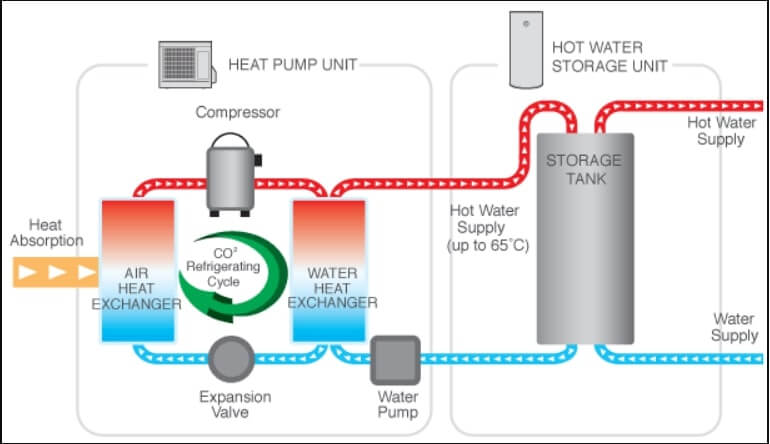
-
What do I do if the Sanden Eco® Plus heat pump hot water system has a problem?
Check our comprehensive Sanden not working checklist here if you think you have a problem with your Sanden Eco heat pump hot water system.
If you're still unsure after going through this guide - please lodge a Pure Electric Service Case here
-
Error Codes for Sanden Heat Pump G4 GAU-A45HPC
The HP will display an error code if it is unable to function normally.
Error codes are indicated by a red LED on the control panel. The control panel is visible via a small window at the right side of the heat pump and it can be accessed by removing the heat pump top cover (4 screws).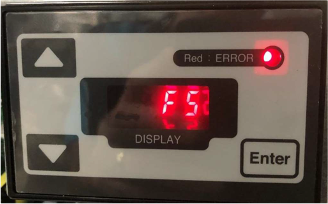
After a component is replaced or the inspection is completed, cycle power to the unit several times to confirm the error does not re-occur.
Below is the list of the error codes. If the corrective action does not solve the error problem, a malfunction of the PCB valve is highly likely.Error
code
Reason for the error
Corrective action
H9
HP ambient(outdoor)
temperature thermistor error
Check the thermistor connectors on the main PCB or control PCB in the heat pump unit for any disconnection, fall-off, wire breakage or short circuit.
Measure resistance of the thermistor indicated by the error code.
HC
HPwater outlet (outgoing)
temperature thermistor error
J3
HP discharge temperature
thermistor error
J5
HP suctiontemperature
thermistor error
J6
HP defrosttemperature
thermistor error
J8
HPwater inlet (return)
temperature thermistor error
H7
Tank temperature thermistor error
- Check the thermistor cable on the terminal block in the heat pump unit for any disconnection, fall-off, wire breakage or short circuit.
- Measure resistance of the thermistor indicated by the error code.
E6
Compressor bootingerror
- Check the compressor connector.
- Replace the main PCB or heat pump.
H6
Compressor revolution error
- Check the supply voltage.
- Measure resistance of each thermistor.
- Measure resistance of coil of expansion valve to check open or short circuit.
Error
code
Reason for the error
Corrective action
Replace the PCB or heat pump.
U0
Refrigerant leakageerror
- Measure resistance of each thermistor.
- Measure resistance of coil of expansion valve to check open or short circuit.
- Replace the main PCB or heat pump.
E1
Main PCB error
Replace the control PCB.
E2
L7
Control PCB error
Replace the control PCB.
F5
Communication error between main PCB to control PCB
- Check the communication connector on the main PCB and control PCB.
- Replace the main PCB or control PCB.
E8
High inlet current error
- Check the installation location.
- Check the supply voltage.
- Replace the main PCB or heat pump.
H8
Current error
Replace the main PCB.
L4
High temperature of module error
- Check the installation location.
- Remove foreign objects from the evaporator coil (e.g. fallen leaves, grass, snow).
- Check the fan motor is not flowing by dirt.
- Replace the main PCB or fan motor.
L5
High outlet current error
- Measure resistance of the discharged thermistor.
- Measure resistance of coil of expansion valve to check open or short circuit.
- Replace the main PCB or heat pump.
P4
Module temperature
thermistor error
Replace the main PCB.
U2
High voltage error
Check the supply voltage.
HJ
Water circuit error
- Check the inlet water valve.
- Check for any piping bend, blockage, kink or frozen.
- Measure resistance of each thermistor.
- Measure resistance of coil of expansion valve to check open or short circuit.
- Replace the main PCB or heat pump.
EC
High water outlet error
- Check the water circuit is not flowing by air, dirt or scaling.
- If the water circulation pump is not working, replace the pump.
- Measure resistance of water outlet (outgoing) thermistor.
- Replace the main PCB.
E9
Water circulation pump error
- Check the water is full in the tank.
- If the water circulation pump is not working, replace the pump.
- Check the revolution of pump by controller. If the revolution is low, replace the pump.
- Replace the main PCB.
Error
code
Reason for the error
Corrective action
E7
Fan motor locked
- Remove foreign objects around the fan motor.
- Check the fan motor connectors on the main PCB.
- Replace the main PCB.
F3
Discharged temperature error
- Measure resistance of the discharged thermistor.
- Replace the main PCB or heat pump.
Error
code
Reason for the error
Corrective action
H9
HP ambient(outdoor)
temperature thermistor error
Check the thermistor connectors on the main PCB or control PCB in the heat pump unit for any disconnection, fall-off, wire breakage or short circuit.
Measure resistance of the thermistor indicated by the error code.
HC
HPwater outlet (outgoing)
temperature thermistor error
J3
HP discharge temperature
thermistor error
J5
HP suctiontemperature
thermistor error
J6
HP defrosttemperature
thermistor error
J8
HPwater inlet (return)
temperature thermistor error
H7
Tank temperature thermistor error
- Check the thermistor cable on the terminal block in the heat pump unit for any disconnection, fall-off, wire breakage or short circuit.
- Measure resistance of the thermistor indicated by the error code.
E6
Compressor bootingerror
- Check the compressor connector.
- Replace the main PCB or heat pump.
H6
Compressor revolution error
- Check the supply voltage.
- Measure resistance of each thermistor.
- Measure resistance of coil of expansion valve to check open or short circuit.
Error
code
Reason for the error
Corrective action
Replace the PCB or heat pump.
U0
Refrigerant leakageerror
- Measure resistance of each thermistor.
- Measure resistance of coil of expansion valve to check open or short circuit.
- Replace the main PCB or heat pump.
E1
Main PCB error
Replace the main PCB.
E2
L7
Control PCB error
Replace the control PCB.
F5
Communication error between main PCB to control PCB
- Check the communication connector on the main PCB and control PCB.
- Replace the main PCB or control PCB.
E8
High inlet current error
- Check the installation location.
- Check the supply voltage.
- Replace the main PCB or heat pump.
H8
Current error
Replace the main PCB.
L4
High temperature of module error
- Check the installation location.
- Remove foreign objects from the evaporator coil (e.g. fallen leaves, grass, snow).
- Check the fan motor is not flowing by dirt.
- Replace the main PCB or fan motor.
L5
High outlet current error
- Measure resistance of the discharged thermistor.
- Measure resistance of coil of expansion valve to check open or short circuit.
- Replace the main PCB or heat pump.
P4
Module temperature
thermistor error
Replace the main PCB.
U2
High voltage error
Check the supply voltage.
HJ
Water circuit error
- Check the inlet water valve.
- Check for any piping bend, blockage, kink or frozen.
- Measure resistance of each thermistor.
- Measure resistance of coil of expansion valve to check open or short circuit.
- Replace the main PCB or heat pump.
EC
High water outlet error
- Check the water circuit is not flowing by air, dirt or scaling.
- If the water circulation pump is not working, replace the pump.
- Measure resistance of water outlet (outgoing) thermistor.
- Replace the main PCB.
E9
Water circulation pump error
- Check the water is full in the tank.
- If the water circulation pump is not working, replace the pump.
- Check the revolution of pump by controller. If the revolution is low, replace the pump.
- Replace the main PCB.
Error
code
Reason for the error
Corrective action
E7
Fan motor locked
- Remove foreign objects around the fan motor.
- Check the fan motor connectors on the main PCB.
- Replace the main PCB.
F3
Discharged temperature error
- Measure resistance of the discharged thermistor.
- Replace the main PCB or heat pump.
-
The cold water valve (or ECV) on my Sanden is leaking a lot what is causing this?
To answer the question why is my cold water valve (or ECV) on my Sanden leaking a lot what is causing this? A few elements to consider.
To protect your Sanden unit from excessive pressure there are three valves:
Valve 1. The pressure reduction valve (PRV) which is located on the water inlet to your home and is set to 500kPa. This valve is designed to keep the pressure out of any tap in your house below 500 kPa.
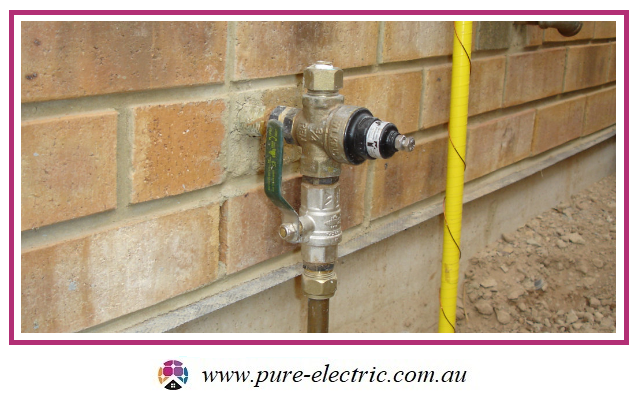
Valve 2. The expansion control valve (ECV) which is located on the cold water inlet to your Sanden and is set to 600 kPa. This valve is designed to relieve cold water instead of hot water during the heating cycle (which increases pressure in the tank) which saves you money and protects the final valve, the PTR.
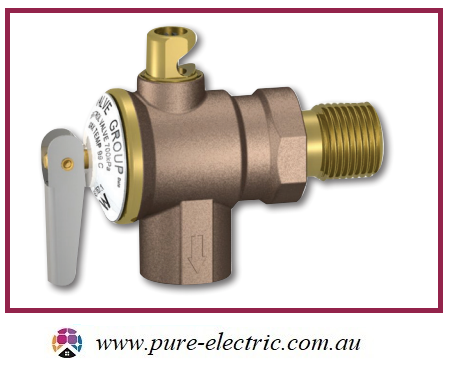
Valve 3. The Pressure and temperature relief valve (PTR) which is located on the hot water outlet to the Sanden and is set to 700 kPa. This valve is designed to release hot water from your tank if the pressure gets too high or the water heating cut-off fails to work.
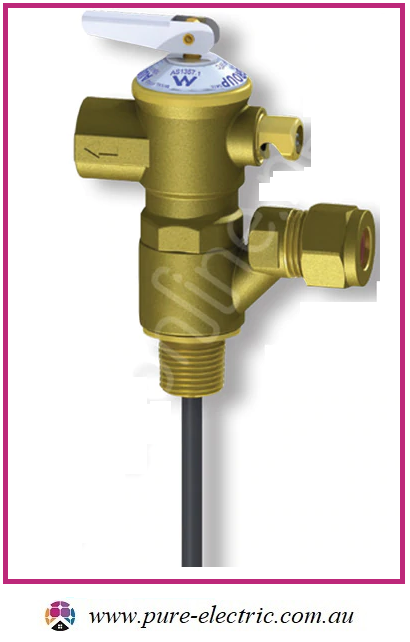
One of the main reasons ECV valves leak water excessively (apart from wear and tear or malfunction) is excessive water pressure in the mains supply which is not properly being reduced by a PRV as it enters your house to at or below 500 kPa; in many areas the mains water pressure is 850 kPa + this is to ensure fire fighters have enough pressure to use their fire hoses properly in the event of a fire.
Note: the Australian standard covering water pressure in the home (AS 3500.1:2018) mandates that water pressure in your home must be kept below 500 kPa as water pressure above 500 kPa has the potential to damage valves, tap fittings, flexible hose fitting etc as the components are only rated to withstand pressures at or below 500 kPa.
So if you notice that the expansion control valve (valve 2 discussed earlier) on your Sanden is leaking excessively chances are you have excessive water pressure at your house and your PRV (valve 1) is either not present or not working.
Either way you should get a plumber to check the water pressure in your house and make sure you have a functional PRV. You can also buy a cheap pressure meter from a hardware shop if you want to check your household water pressure yourself: Note your mains pressure is not constant it will change based on a number of factors including local water use, time of day, time of year or changes in your local area such as new housing being built etc.
info@pure-electric.com.au
1300 86 78 73


